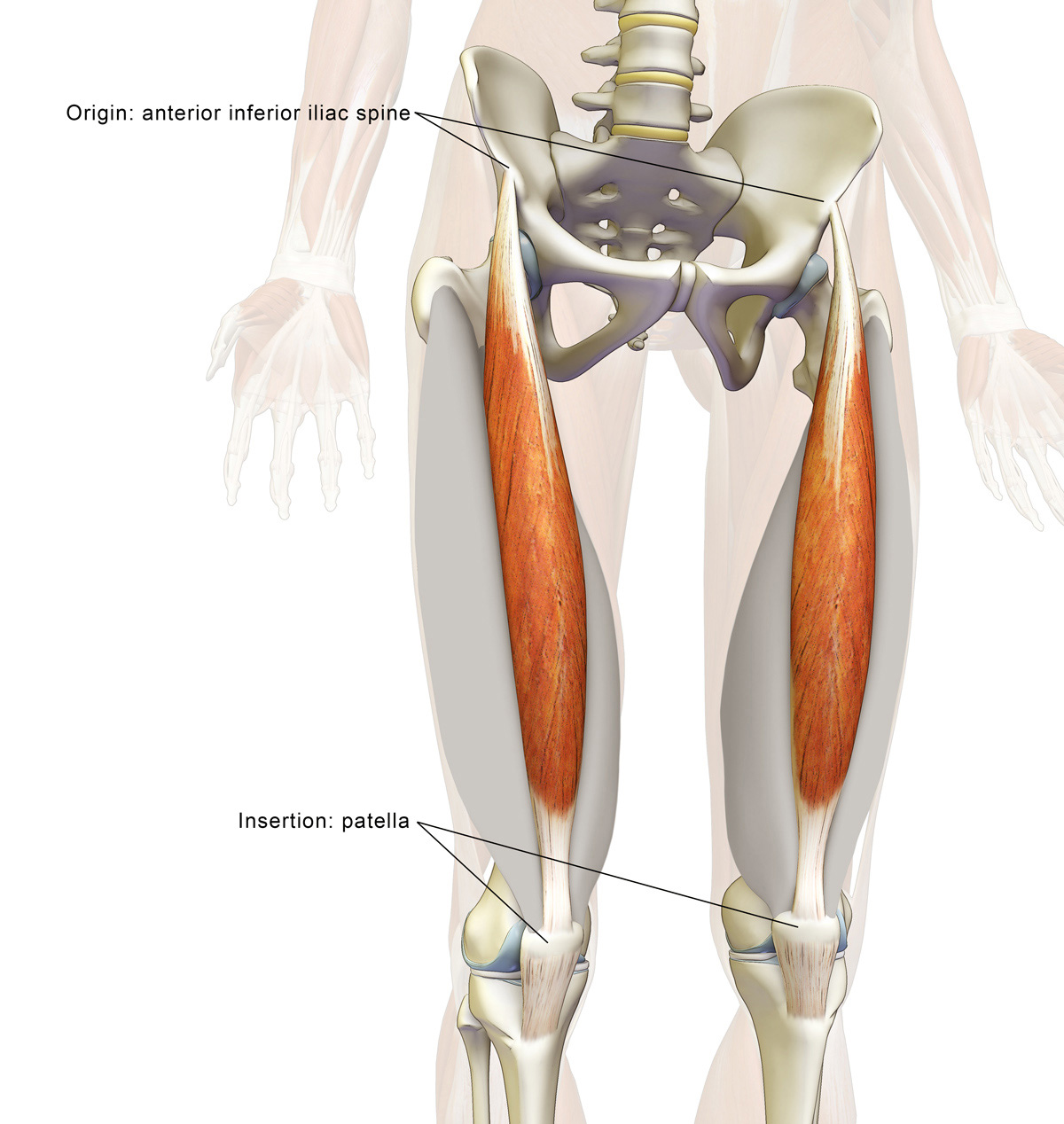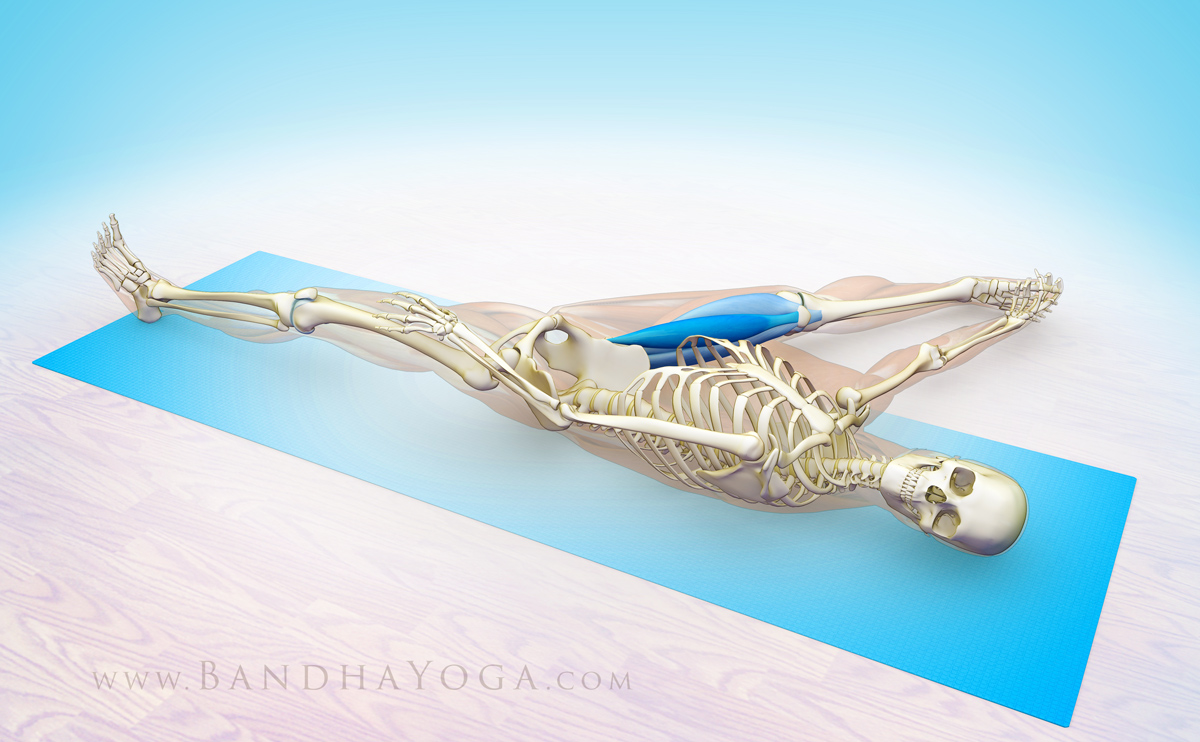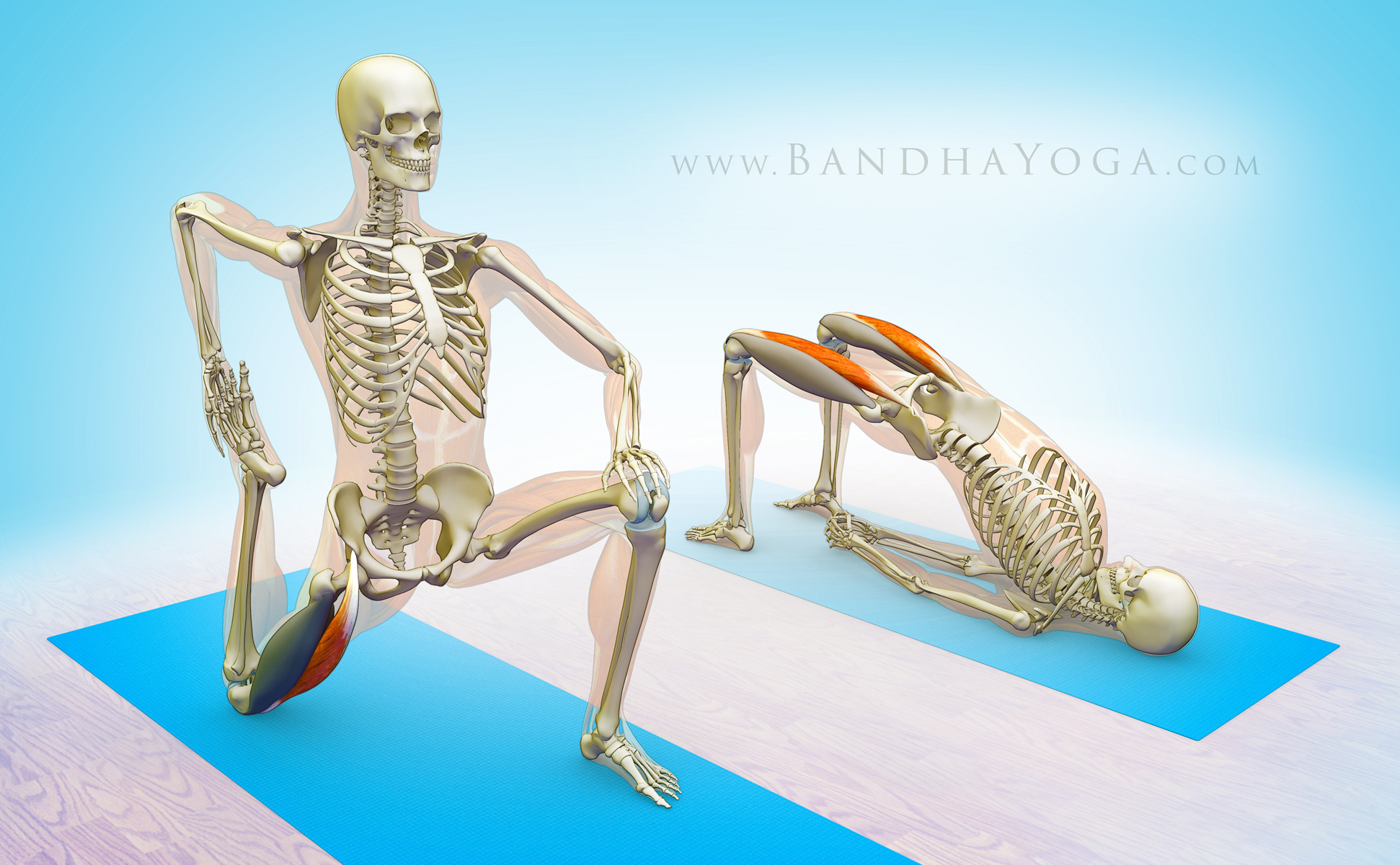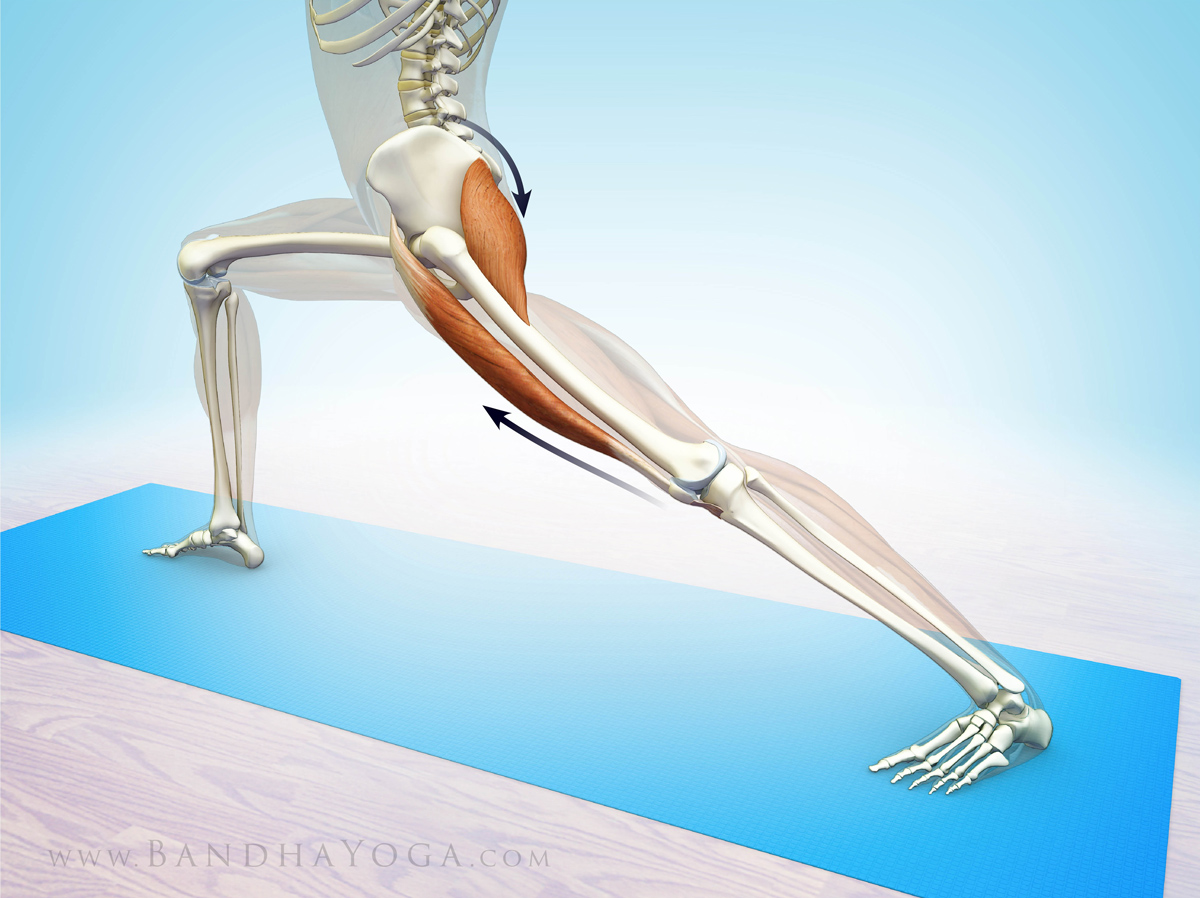In this blog post we examine the rectus femoris muscle and its relation to yoga poses, beginning with an overview of the muscle and how it stretches. We conclude with some interesting synergy that can occur between the rectus femoris and the gluteus maximus in poses where both the hip and knee are extending, such as Warrior I.
Here’s the anatomy…
The rectus femoris is one of the four heads of the quadriceps muscle. It runs from the anterior inferior iliac spine to the quadriceps tendon, which attaches to the patella or knee cap. The patella then attaches to the tibial tubercle via the patellar tendon. The rectus femoris thus crosses both the hip and the knee, making it a bi-articular muscle. Note that the other three heads of the quadriceps muscle only cross the knee joint and are mono-articular (figure 1).
 |
| Figure 1: The rectus femoris muscle with its origin and insertion. |
The rectus femoris combines with the rest of the quadriceps to extend the knee joint. It also acts as a synergist of hip flexion and has increased activity with abduction and external rotation of the hip joint. Figure 2 illustrates this in Supta padangustasana (performed with the leg abducted). Click here to learn more about the relationship between the quadriceps and the pelvis in our blog post, “Preventative Strategies for Lower Back Strains in Yoga.”
 |
| Figure 2: The rectus femoris contracting to flex the hip and extend the knee in Supta padangustasana. |
Stretching the rectus femoris is best accomplished in poses that combine hip extension and knee flexion. Poses like Virasana (with the hips flexing) are good for stretching the other heads of the quadriceps, however, a reclining variation is necessary to lengthen the rectus femoris. Figure 3 illustrates two poses that stretch this muscle.
 |
| Figure 3: Stretching the rectus femoris by extending the hip and flexing the knee. |
Finally, figure 4 illustrates the “antagonist/synergist” relationship between the rectus femoris and the gluteus maximus in poses like Warrior I. The gluteus maximus is a hip extensor and, thus, an antagonist of the rectus femoris for this action. If the foot is fixed on the mat, contracting the gluteus maximus tilts the pelvis as shown (closed chain action). Tilting the pelvis back and down creates a pull on the rectus femoris, which is transmitted to the knee joint, leading to more efficient knee extension. In this manner, the gluteus maximus is an indirect synergist of knee extension.
 |
| Figure 4: The antagonist/synergist relationship of the gluteus maximus to the rectus femoris. |
Many thanks for all of your feedback on stretching the rectus femoris in last weeks “Muscle of the Week” on Facebook. Check in tomorrow for the next one…
Click here to browse through all of our books.
Thanks for stopping by The Daily Bandha. Stay tuned for our next post when I'll present another subject on combining science and yoga. Also, we greatly appreciate when you share us on Facebook, Twitter and Google Plus.
Namaste'
Ray and Chris